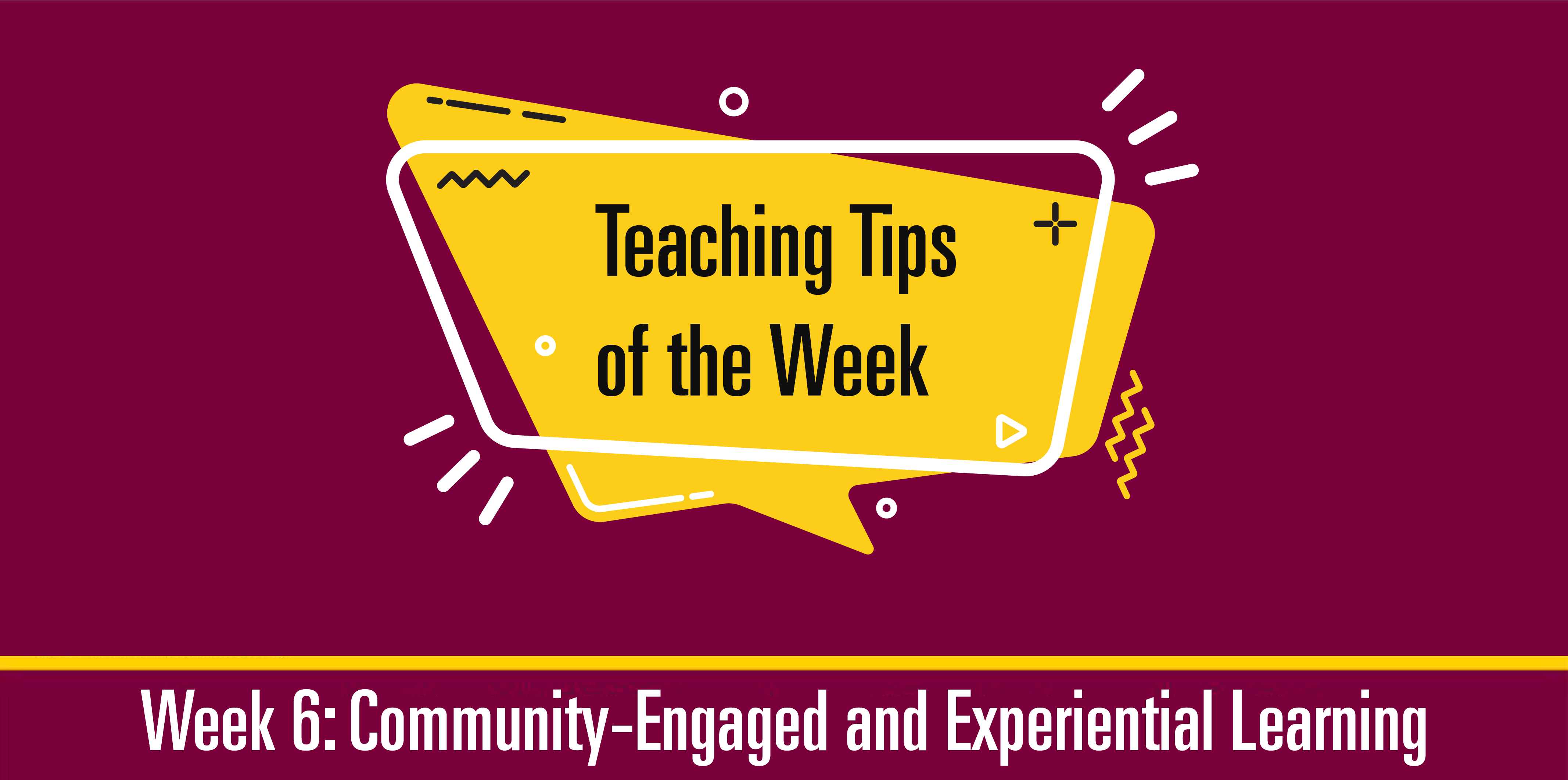Teaching Tips of the Week: Community-Engaged and Experiential Learning

The Virtual Learning Task Force has published its report and compiled a list of Teaching Recommendations for winter term 2021. As you prepare your course for winter term, you may consider making some of these changes to help address common challenges identified by students and instructors.
Teaching Tips of the Week #6: Community-Engaged and Experiential Learning
These tips were developed by the Office of Community Engagement following consultation with students and instructors participating in online community or experiential teaching and learning. Consider the following suggestions for your existing community-engaged or experiential course:
- Assess if experiential and/or community-engaged learning is necessary to meet essential learning outcomes. If not, remove those components.
Planning Phase
- Consult campus resources available (e.g. Office of Community Engagement, MacPherson Institute, and Faculty Experiential Education offices)
- Reach out to potential community partner(s) and clarify goals and roles
- Recall best practices related to developing respectful relationship with communities
- Co-create an “authentic” experience
- Manage expectations and be clear on experiences related to learning outcomes
- Manage your own expectations
- Minimize stress for students, instructors and community
- Reassess goals and course/program objectives by considering the purpose of the EE or CEL component, think through the student learning objectives and how they can be achieved virtually, and, if necessary, assess the availability of your community partners- are they still available to support and engage students? If not, consider Community Informed Education through using the Community Engagement Library Guide
Considerations for accredited Professional Programs, Co-ops and Labs
- Facilitate an Informed Project or Exercise
- Challenge is provided by community partners or is related to a community issue
- Community partners may act as consultants, class presenters or mentors
- Consider a simulation in virtual classroom
- Consider using case studies, role plays or gamification
Create a community in the classroom
- Use ice breakers, skill building exercises and discussion questions to build group cohesion and relate them back to course objectives
- Ask students to reflect on how engaging in a class community is similar and different from engaging with communities
- Remind yourself and students that problems, difficulties, even project failures are learning experiences
Community research
- Leverage digital technology for participant interviews, meetings, recording, transcription, and/or NVIVO with ethics approval
Looking for additional resources?
- Check out the Community Engagement and Research Guide. This interdisciplinary resource, developed by the McMaster Library, MacPherson Institute and the Office of Community Engagement, is intended for use by students, staff and faculty looking to understand the Hamilton context as they engage with off-campus communities through teaching, research and service.
- Visit the Community Engagement – Education Resources page for a variety of tools and resources to help design and implement community engagement and experiential learning opportunities into your course or program.
